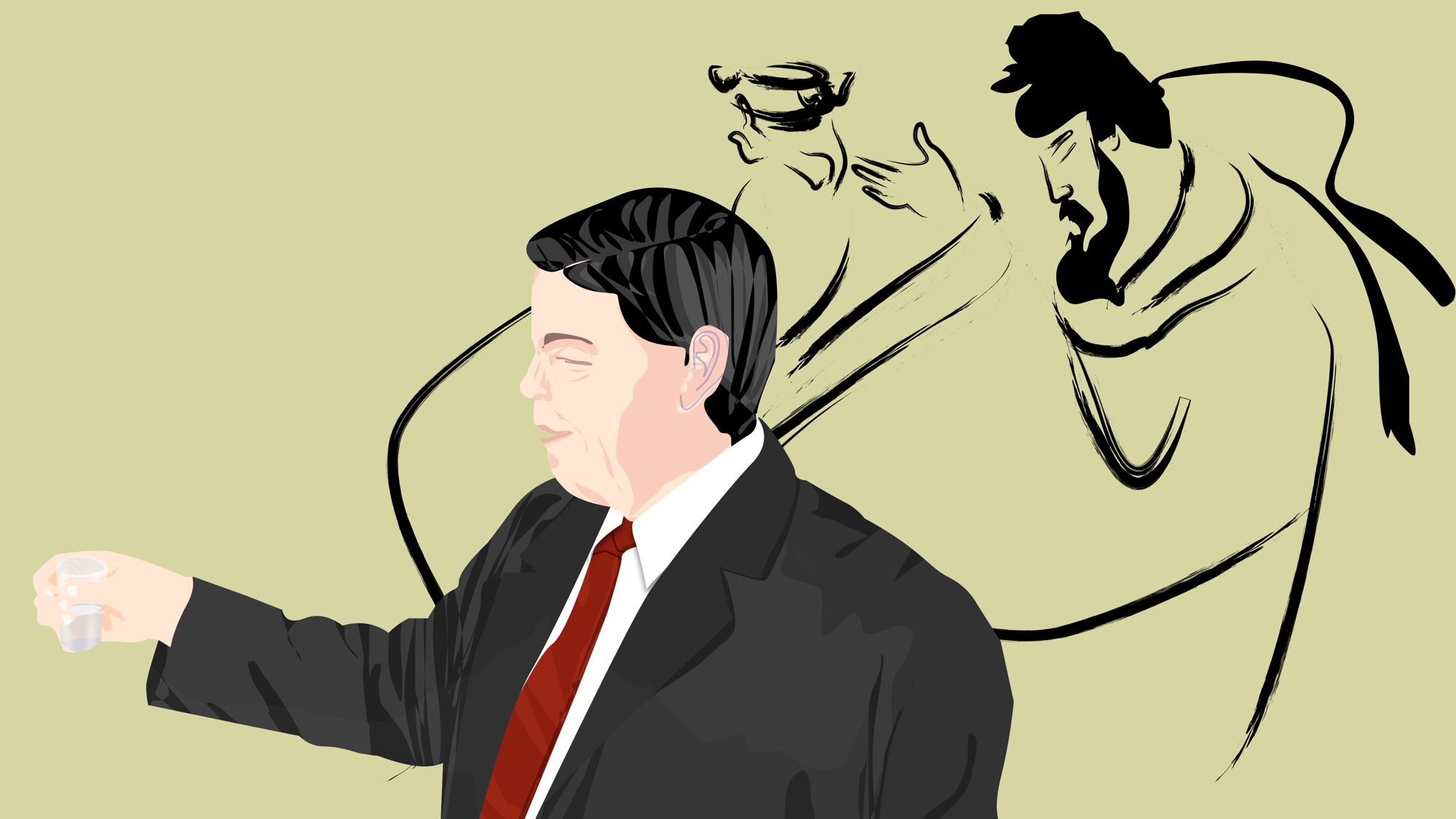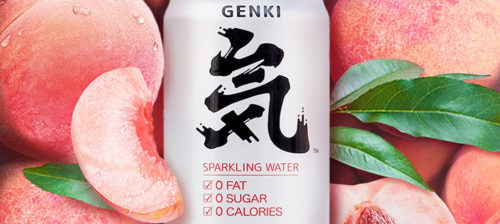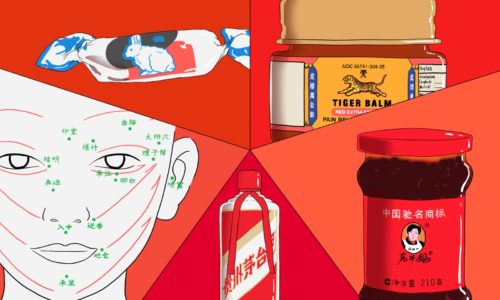China and its centuries-old drinking culture
Perhaps it's time for the country to admit it has a drinking problem.

It was the slap heard around banquet tables across China.
In mid-August, employees of Xiamen International Bank’s Beijing branch were hosting a business banquet. A person surnamed Yang, a new employee at the bank (Yang’s identity, like all others involved in this incident, has been kept confidential), agreed to attend, but warned the branch manager that, for personal reasons, they would not drink. Despite this, once seated around the Lazy Susan, Yang was called on to drink by a bank leader. Yang declined, again explaining they could not drink.
Three rounds of baijiu into the banquet, with everyone other than Yang fairly tipsy, another bank manager came over to Yang and boxed Yang’s ears. This other manager said that, despite being allergic to alcohol, he still took the toasts, so what made Yang special? Soon, with coworkers yelling at Yang, Yang left. Yet still, some coworkers chased after Yang, hollering all the way to the restaurant escalator.
The reaction
The incident sparked a strong reaction, with the bank announcing it would investigate the matter. A few days later, the bank said it had fined the two managers involved, though the coworkers who chased Yang to the escalator were apparently not punished.
Online reaction was even more swift. Most people on social media were supportive of Yang. Although some blamed Yang for not knowing how China’s banqueting culture worked, the vast majority praised Yang and expressed their wish that Chinese drinking culture could become more refined — as it had been in imperial China. One person commented: “After drinking, the ancients had sophistication and could write poetry. Today, all people do when drinking is talk big.”
Commenting on the same site, another person linked the problems of China’s drinking culture to the fortunes of the nation: “If every employee chose to slap back, then this would bring about the great rejuvenation of the Chinese people.”
Newspaper commentators also sounded off. One writer suggested that China’s traditional drinking culture had been perverted, pining for their imagined versions of drinking culture in imperial China, when figures like Lǐ Bái 李白 (701-762 CE) and Táo Yuānmíng 陶渊明 (circa 365-427 CE) wrote poetry while drinking. He suggested that Chinese drinking culture needed to change to a “refined drinking culture,” the kind seen in the Dream of the Red Chamber.
Another editorial voiced a similar complaint: “But in ancient times, true drinking culture was a kind of refinement, completely different when compared with today’s wild drinking culture. The ancients drank alcohol, but that which they esteemed was not getting drunk, dead drunk, but rather it was a tipsy mood [that they esteemed].”
The missing factor
Of course, there’s a flaw to this line of thinking. A key reason “the ancients” did not usually get wildly drunk is because they were not consuming the same degree of alcohol as people do today.
Distilling technology did not arrive in China until around the 12th century, meaning that no one in China before that time could have consumed anything that was more than 20% alcohol by volume (ABV). In other words, Li Bai never drank anything much more alcoholic than wine. Why was it that ancients did not esteem getting dead drunk? Because it was a lot harder. Today, 80% of all alcohol in China is consumed in the form of baijiu (which is often in the 35% to 60% ABV range) or other similarly high-alcohol spirits. There is clear evidence that high-alcohol spirits are linked to higher death rates and bad behavior.
The numbers demonstrate how the rise of wealth in China tracks closely with the rise in alcohol consumption. In 1952, China drank 0.4 liters of pure alcohol per capita. By 1979, that number had risen to 2.5 liters, and in 2009, it had jumped to 4.9 liters. A 2017 World Health Organization report estimated that Chinese people today drink 7 liters of pure alcohol per capita, with that number expected to rise to 10 liters per capita by 2030. The report also suggests China will overtake U.S. alcohol consumption per capita, estimated to decrease to 9.5 liters of pure alcohol per capita by 2030.
Furthermore, researchers have found that alcohol abuse has grown from essentially nonexistent in China in 1980 to a serious problem today, with levels of alcoholism on par with the West. As wealth has increased, Chinese tipplers have had more opportunities to purchase high-octane alcohol like baijiu.
Many in the country wonder why drinking today seems so much wilder than drinking of yore. The answer is that Chinese people today are drinking much more (in terms of amount of alcohol consumed). People may see themselves as drinking like Li Bai, but they are not drinking what Li Bai drank.
Baijiu: Everything you need to know about China’s national liquor
Is change on the horizon?
Will the national conversation started at the business banquet in Beijing change China’s drinking culture?
Probably not.
The first step to overcoming a drinking problem is to recognize that you have a problem. Based on the national conversation happening right now, few in China seem to recognize that the country has a drinking problem. If China cannot face its problem and recognize that it is consuming 17 times the amount of alcohol as it did seven decades before, change is unlikely to follow.
A further problem is that nationalism has increasingly become a part of the country’s identity. Images of Chinese imperial glory have become an important part of how the Chinese state and people understand what it means to be Chinese. Many of these images of imperial glory are connected to drinking (see the scene in Wolf Warrior 2, when the main character wins a drinking contest by chugging multiple bottles — almost certainly a fatal number — of baijiu). This means alcohol is likely to play more, not less, of a role in the way people socialize and see themselves.






